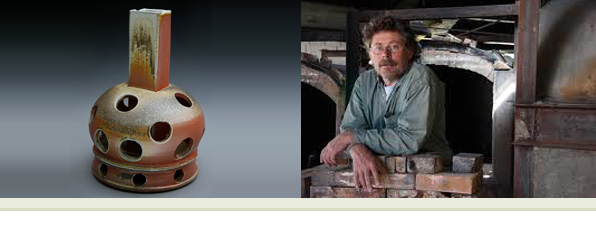Doug Casebeer has directed the ceramics and sculpture programs at Anderson Ranch Arts Center in Colorado since 1985. Doug teaches and exhibits worldwide. His shows include “Prints, Pots, and Sculpture”, a solo show at the University of Sacramento’s Else Gallery; “Recent Work” Harvey/Meadows Gallery in Aspen, Colorado. He has served as pottery/ceramics consultant to the U.N.’s Industrial Development Organization, and recently as a board member for the Carbondale Clay Center in Carbondale, Colorado.
What was the most difficult for you when you finished school?
After I finished school, finding a job was the biggest challenge. I finished at Alfred and I wanted to find a teaching job, but unfortunately at the time there were no teaching jobs available. During the last week of school, I saw a posting for a ceramics technician position with the United Nations in Kingston Jamaica. I took the job and the next three years I spent working in a pottery factory. Just to give a little background on me, I grew up in Kansas and went to undergraduate at Wichita State University. I came from a very comfortable place, and looking back, I am thankful that I didn’t get a teaching job when finishing school. The job that I took really forced me to learn about myself. Distance gave me a chance to understand making, and taught me about my art, my values, my inspiration, and helped me find which direction I was going.
What advice would you give to a young artist?
Set long-term goals, and have reasonable expectations for yourself. You have to realize that making is a lifetime commitment. Patience and tenacity are things that every artist has to acquire at some point. In addition, I would say that travel is very important. Travel puts a sense of consciousness to why we do what we do. All of us are given the gift to make art; no one else is given that gift. You have to hold yourself responsible for that, because that is our purpose. You have to think about how the artist interacts with the community. Art is the voice of the community, and our obligation as artists is to interact and be a part of that voice. In turn, the community will respond with support for the artist. It is important to get involved with outreach programs. Identify your profile in the community as an artist, empower the people that want to use your work. Just making is great, but it doesn’t cut it, you have to be a part of the community that surrounds you.
What have you done that has helped you get where you are?
I have worked for a non-profit organization for 22 years in art education and outreach programs. I guess you could say this is my path in life. For me it has involved a lot of sacrifices and compromise, and I believe in the cause, so I know I am in the right place. I have done two larger outreach programs, one in Jamaica and one in Nepal, working with local entrepreneurs and community members we began by interacting with school children. Through education, we put kids to school so that they could learn to promote their family businesses. It was important to remember we had short term/long term plans, but not to let long term goals in the way of short-term plans. This project has taken years, and you can’t build the house in a day, you just try to lay the foundation.
Which do you find exerts a stronger influence on your work, success or failure?
I am compelled by failure and excited about success. In a way I am my own worst enemy. Say I break a really nice teapot; I get right back at it, making a more successful second attempt at that teapot. Failure doesn’t go away in ceramics, and you can’t take yourself too seriously, I guess rolling with the punches is a good attitude to have when working with clay.
What do you see young artists struggle with?
I find that those who come out of school without a plan are those who struggle with clarity of what their art is. You have to possess an understanding of time, and have a plan for yourself. It is so important to spend time to understand what your values are as an artist. Think about what establishes a foundation of values in artwork. More people need to spend time on issues of personal voice and inspiration. The next phase will be a foundation and a vocabulary to work from. You have to know what to make, and be clear as to your intent.
